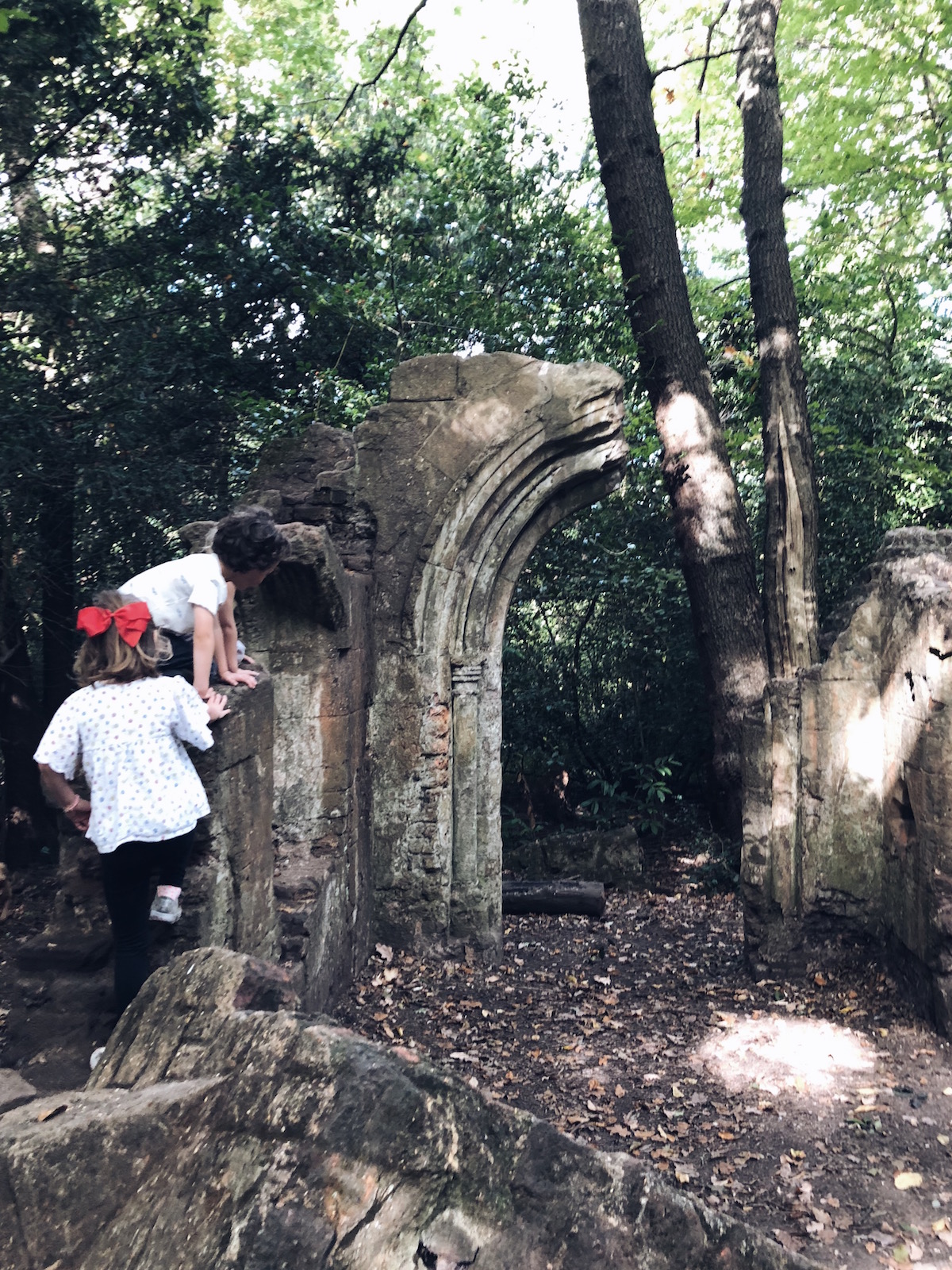Trees and butterflies
We are searching out forests wherever we go, following paths that lead to unknown places. On this side of the world they are green and gloaming, not dry and dust-filled like the bush of my childhood. I like to kick my shoes off whenever I can, feeling the hum of the earth beneath my toes.
“Humph. Mum’s grounding again,” Scout complains. It is strangely liberating to remember, as I stand, that there are no deadly snakes or spiders lurking in the fallen leaves or hiding under rock and bush. Instead, we find…
conkers
chestnuts
blackberries, small and sweet
butterflies
crumbling ruins
whispering winds
acorns
wild apples
red-berried holly
rose-hips
(and once, something unseen that growled from behind brambles)
Inside these woods the fairytales I grew up reading seem much closer. It is easier to picture Hansel and Gretel or Little Red Riding Hood growing lost in these dark corridors, than in the brighter trees of my own remembering.
Of course, there is a hot, clean beauty to the Australian bush, too. The crunch of leaves and march of busy ants beneath my feet. The expansive shade of eucalyptus trees, whose baby leaves can be stretched and made to whistle a tune; bright flashes of bottle-brush in bloom; prehistoric, towering cathedral-ferns; and the eerie, dead-bone rattle of black wattle in the breeze.
Trees are trees and they love best to be together: when you find them gathered, on any side of the world, there is life and beauty to be found. But I am ever-drawn to these northern forests. I long for darker, cooler, deeper woods, and I hope I never quite unravel all of their mysteries.
I have a little theory that I like to play around with in my head sometimes, in that half-awake time in bed before sleep. It is undeveloped and unsubstantiated, truly just a theory, but I find it oddly comforting.
(I wonder if I subconsciously came up with this theory as a way of excusing or apologising to myself and my parents for not feeling more in love with the landscape and climate of my homeland, Australia. I have never felt properly at home in it. This seems unfair to a land that has given me so much, and that is so intrinsically beautiful, and I can’t explain it in any logical sense, which might explain the theory.)
It goes a little something like this…
Every year in autumn, millions of monarch butterflies fly thousands of kilometres south from the US-Canadian border to Mexico, only to head north again come spring-time. The fascinating thing is that given the life-span of a butterfly, five generations live and die in the interim. When it’s time to embark on their journey home, not a single butterfly alive has done it before. There is no-one to lead the way, not even anyone left to tell them about it. And yet their sense of direction is so accurate that every year they return no only to the same area, but often even to the very same tree that once was home to their great-great-great-grandparents.
The butterflies navigate by using a sophisticated combination of the sun’s position in the sky, and their own biological clocks. This is the idea of cellular memory, something deeper and more physical than our neurological memories: memories or associations that are imprinted, instead, into our very DNA.
If you speak to many Aboriginal or Torres Strait Islander Australians, you will hear something along similar lines, although often using different language. The land belongs to them and they belong to the land, and no amount of dispossession and destruction at the hands of us immigrants can change that deep reality.
But I am not Aboriginal or Torres Strait Islander, and I fear this hot and harsh and beautiful land does not belong to me, nor I to it. I am like a monarch butterfly, turning my antennae toward the homeland of my grandparents. Surely, in all the hundreds and thousands of years that my ancestors lived and loved on the other side of the world, right up until two generations ago… surely there is something of that in my DNA that could explain why I feel such a powerful and incessant longing to go north?
Or at least, that’s my theory.







